Tahiti island

Our cruises departing from tahiti
Tahiti, the starting point of all Aranui cruises, is a high mountainous island created from an extinct volcano. The impressive caldera that forms the centre of the island bears witness to this ancient volcanic activity. Tahiti is home to the capital of French Polynesia, Papeetē, as well as the Tahiti-Fa’a’a International Airport and is both a place to stopover but also to explore a range of places.
Papeete : The port of departure and return of the Aranui
Tahiti is the most populated island in Polynesia: out of more than 260,000 inhabitants, nearly 180,000 live on the island of Tahiti. It is also one of the most modern and well-equipped islands in the region, especially in its capital, Papeete where you will find shopping malls, cinemas, department stores, art galleries, a central hospital, and numerous restaurants. All Aranui cruises leave and return from the port of Papeete (see map below) and our passengers can have time to visit the island of Tahiti before or after their cruise.

Tahiti : A generous nature, black sand beaches and wild valleys suitable for hiking
Outside of Papeetē is the best place to discover the original and exotic island and its natural charm. From diving and hiking to rivers and waterfalls, or its legendary historical sites, and museums, all are on offer to visitors in search of authentic Tahiti. Just take a tour of the island to discover this for yourself. See the beautiful black sand beaches. Some are peaceful whilst others, such as Teahupoo, are popular surfing spots and a place where amateurs can join various activities or merely stand back and watch. The deep valleys and high mountains are the location for various legendary archaeological sites of ancient Polynesia and the population is very mixed with a genuinely warm sense of welcome and hospitality.
The island of Tahiti has a tropical climate with two main seasons: a hot and humid one from November to May and a cool and dry one from May to November. The pleasing result of this varied climate creates lush year-round flora and countless fragrant flowers as well as a comfortable habitat for a rich variety of nature.



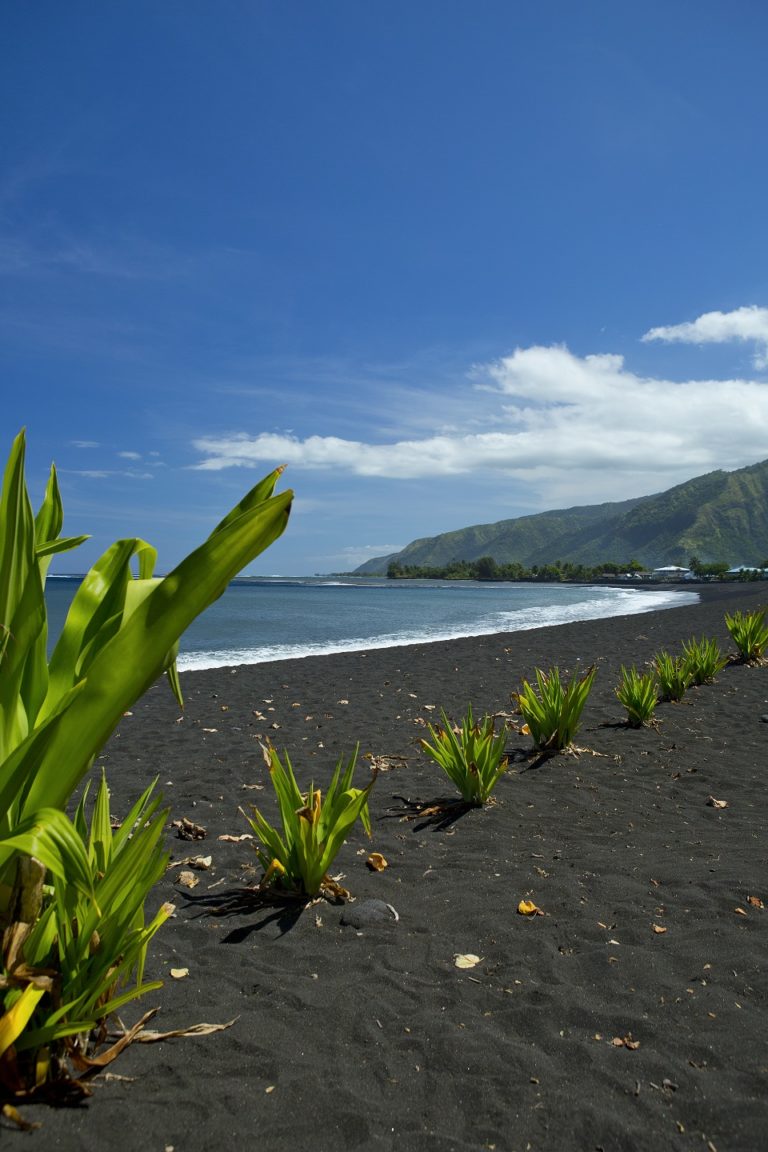
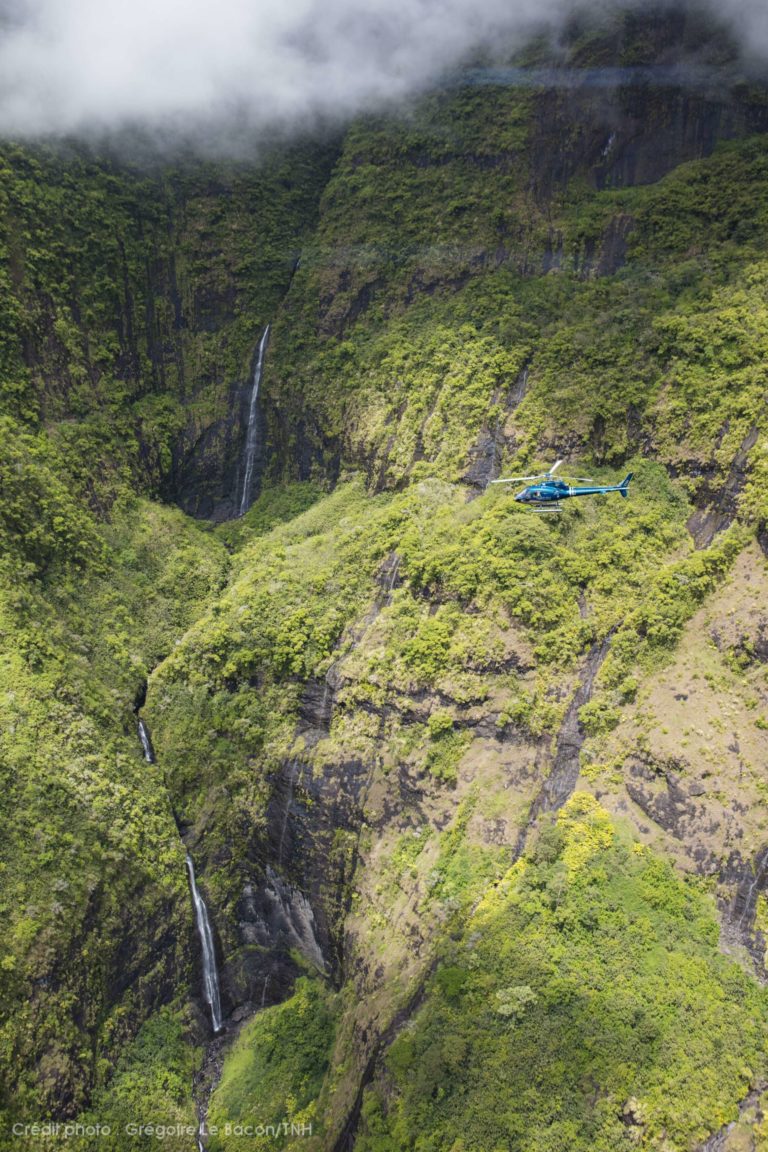

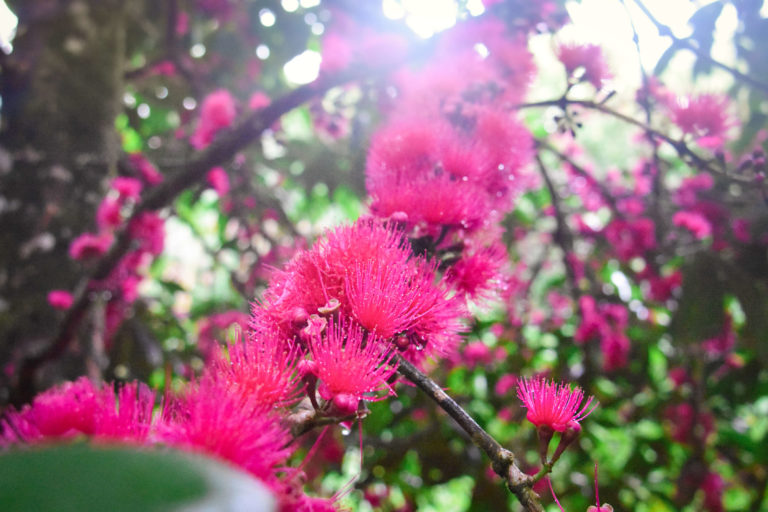
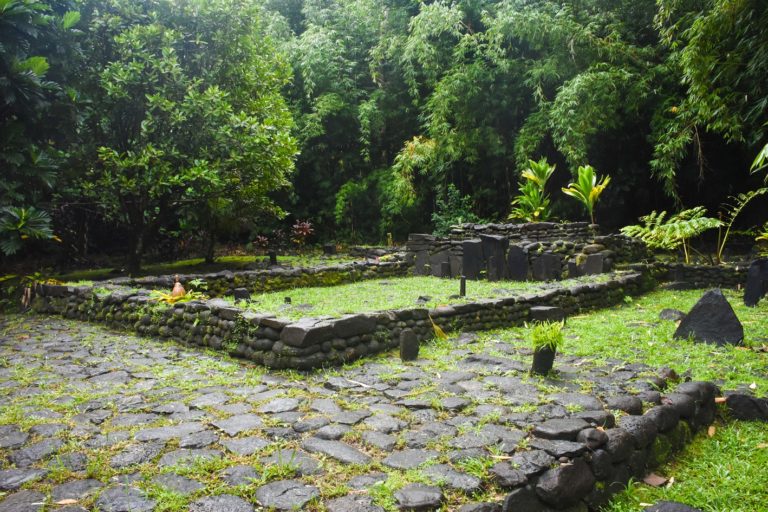

WHAT TO DO ON TAHITI BEFORE OR AFTER YOUR ARANUI CRUISE
Among the must-see sites to visit on the island of Tahiti, do not miss :
Papette
- The colourful market in Papeete with its typical Polynesian atmosphere.
- Vaiēte Square for its local, friendly atmosphere and street food trailers.
- The cultural and historical sites: The City Hall, the Notre-Dame Cathedral, the old Vai’ami hospital, the Queen’s Basin, the House of Queen Marau, the Bougainville Park, and its cannons that have witnessed past history, the Temple of Pā’ōfa’i, and the Robert Wan Pearl Museum
Tahiti Iti Peninsula
- The Taravao plateaus, which can be explored on horseback or in a 4×4 vehicle, offers breath-taking views of the isthmus of the peninsula.
- The small white sand beach at Vaira’o
- For one of the most beautiful places to swim and cool off visit Tautira and the Vaitepiha River
- Take a tour of the Vai’ote Valley to see its rich petroglyphs.
- See the mythical waves of Teahupoo, a mecca for surfers.
- See Fenua ‘aihere and the Pari site: both places are covered in vegetation and offer multiple hiking trails and paths that lead to caves which can be explored on foot… The Pari site includes many natural, archaeological, and legendary sites.
East Coast
- Visit Pīra’e where a restaurant offers panoramic views and provides the starting point for several hiking trails, including one to Mount Aora’i.
- See ‘Ārue which houses the tomb of ‘King’ Pōmare V and the home of writer James Norman Hall, who wrote the 1932 book about The Mutiny on the Bounty. The commune also boasts a splendid colonial town hall, a black sand beach and a beautiful view of the island of Moorea from the Tahara’a pass.
- See Matavai Bay, where Samuel Wallis landed in 1767. The black sand beach at Pointe Venus is popular with families and the view of the bay and the island of Moorea from the beach, is enchanting.
- Visit Papeno’o, which is famous for its waves and an ideal spot to learn to surf and see its valley which is rich in archaeological treasures, rivers, and waterfalls.
- See Ti’arei: ‘The Blower’s Hole’ is a natural cavity with a powerful blast from the surf below. Nearby are the three waterfalls of Fa’auruma’ which form pools and offer a refreshing bathing spot at the end of an easy walk.
- Hiti’a’a: The volcanic lava tubes of Hitiaa are underground channels and eroded sections of rock in caves that have been carved out by water over thousands of years. Hire a guide to take you there and also discover phosphorescent mushrooms, puhi tari’a (eels with ears) and other natural treasures in this area of Tahiti.
West Coast
- See the Mataiea and the Vaipahi Water Gardens waterfall, which rises in the heart of a lush garden.
- Visit Papara and book a tee time on its golf course.
- See the caves of Mara’a, a natural curiosity. Discover the two marae in the village of Pa’ea: ‘Ārahurahu and Maraeta’ata.
- Punaauia: The famous white sandy beach of “PK 18” is a popular swimming spot for Tahitians with a beautiful view of Moorea. Visit the ‘Museum of Tahiti and the Islands’ which offers a complete overview of Polynesian history, geography, culture, and settlement.
- Fa’a’a: Climb Mount Marau on foot or take a car to see its superb panoramas in the heart of the island. Walk through lush vegetation to where fabulous plateaus, valleys and rivers are revealed.
The island of Tahiti offers beautiful canyoning tours, a refreshing alternative to lagoons and beaches. The numerous waterfalls and gorges in the heart of the island make it an ideal route for both thrill seekers and nature lovers.

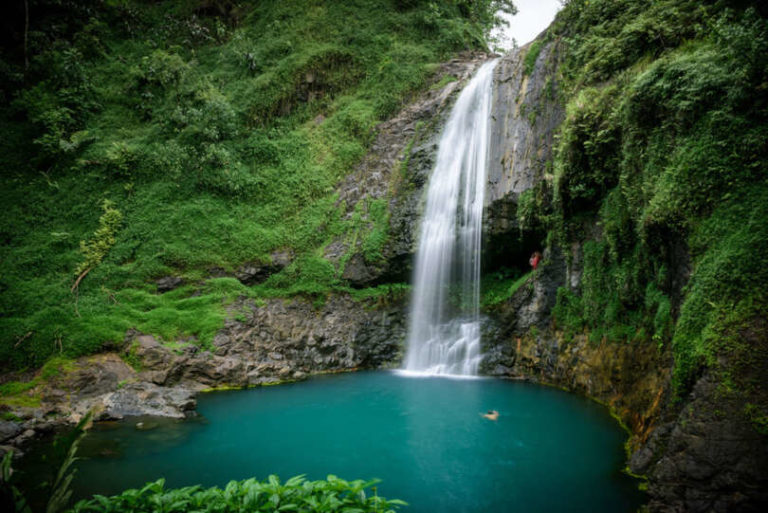
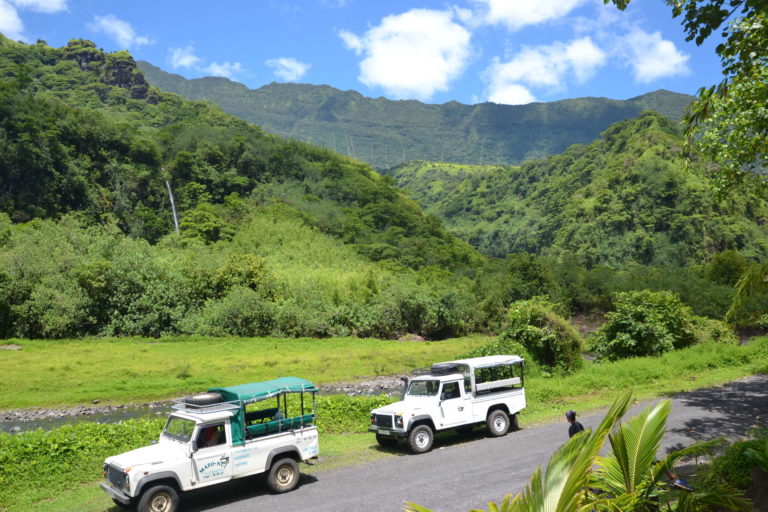
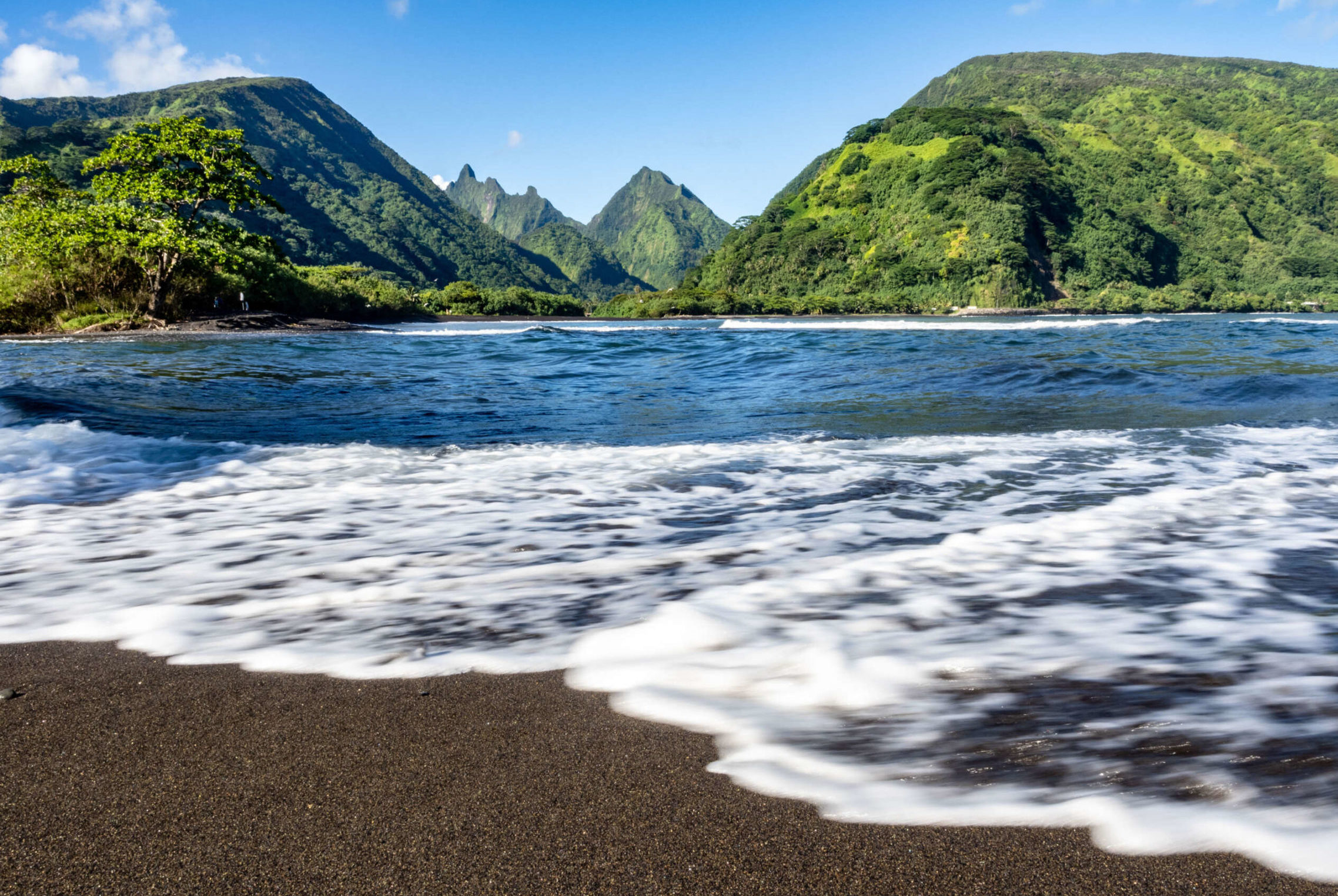
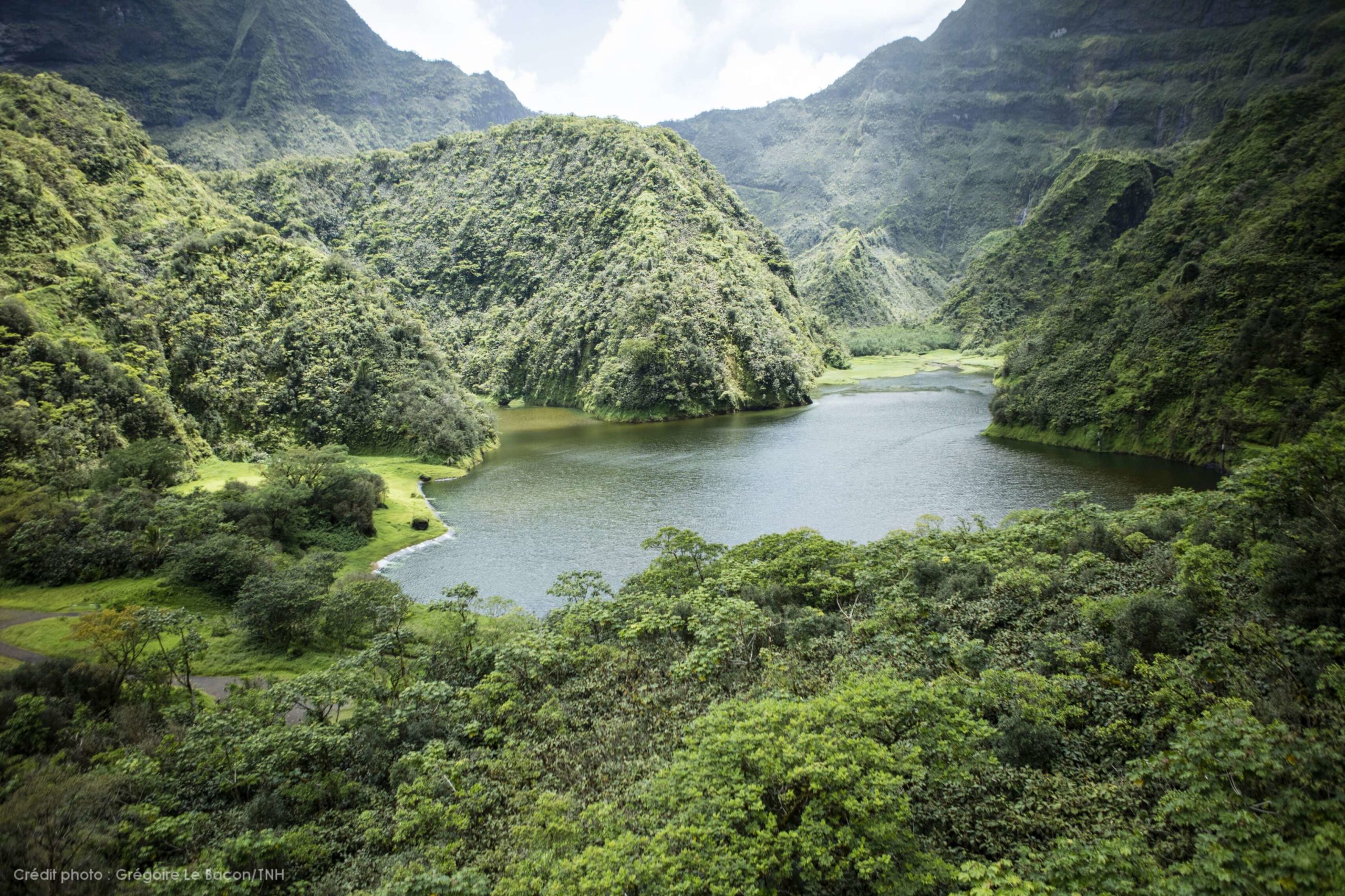
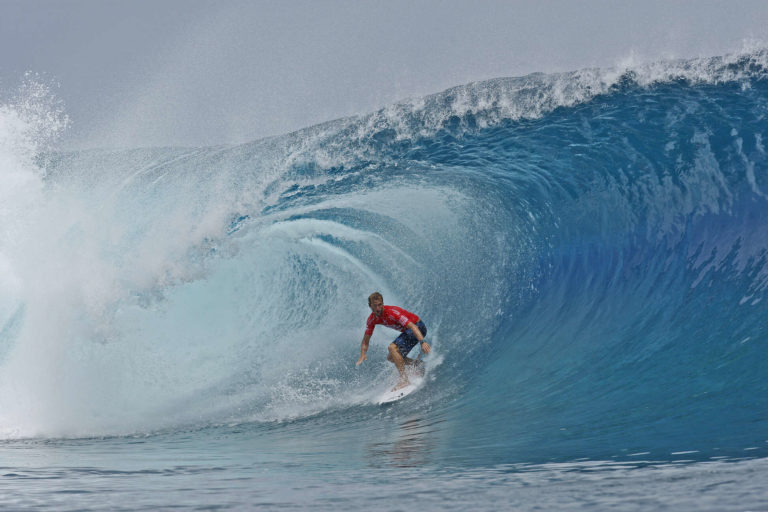
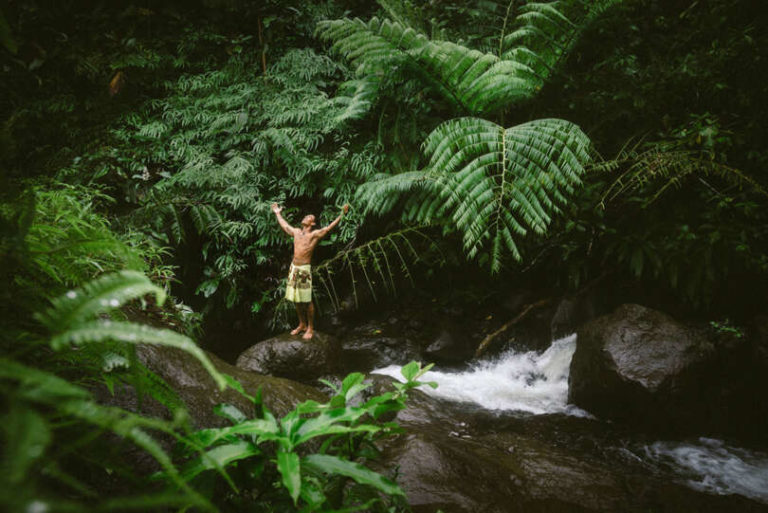

TAHITI: practical information
It’s summer all year round in Polynesia and Tahiti! However, there are two seasons: the dry season, from May to October, and the wet season, from November to April. The average annual temperature is 27°C, with the trade winds blowing and constantly cooling the atmosphere of our islands. Note that during the rainy season, hot tropical rains rarely last more than 30 minutes. To know the weather forecast for Tahiti, you can consult Weather.com.
There are two official languages in Tahiti: French and Tahitian. Native languages are widely used and each archipelago has its own specificities. In the Society Islands, of which Tahiti is a part, the Tahitian language (Reo Tahiti) is used. It is also the vernacular language used in all the islands of Polynesia.
The local currency is the Pacific XPF. For any cash exchange, visitors can contact their hotel or cruise ship, the Faa’a airport, or banks on the islands. There are ATMs on the larger islands. Major credit cards are accepted in most hotels, stores, and restaurants on the larger islands but may not be accepted in markets, smaller stores, and less-visited islands.
Much of the handicraft production of all the archipelagos can be found in Papeetē, especially at the market: weaving, basketry, monoi, carvings, beads, pareos, jewelry, tapa, tīfaifai, etc. In almost every bead store in the capital, you can create your own jewelry by choosing beads and frames. Clothing, tableware, books have also found a place of choice in Polynesian production. A tattoo, a traditional art form widely practiced in Polynesia, original and rich, can also be a beautiful and eternal souvenir!
Shops are open Monday to Friday, from 7:30 to 11:30 am, and from 1:30 to 5:00/6:00 pm, as well as on Saturdays: from 7:30 to 11:30 am, and even in the afternoon for some of them. Most stores are closed on Sundays, but it is at the Papeetē market that the excitement begins at 5:00 am. There you can find a wide variety of flowers, fruits, pareos, hats, mother-of-pearl, art objects and various souvenirs.
It is possible to rent a wifi box that you can pick up upon arrival at Papeete airport, to enjoy a high speed internet connection with optimal coverage in the main islands. Most hotels offer wifi access in their common areas or computers in their business lounges. The most luxurious hotels offer wifi in the rooms. There are also cybercafés on the larger islands, or wifi access in bars and restaurants.
The island of Tahiti concentrates most of the economic activity of French Polynesia. Tahiti’s economy is characterized by the preponderance of the tertiary sector and by the weight of non-market activities (administration, education and health in particular). But the economic activity of the island is far from being limited to these two sectors, since Tahiti is also the first agricultural producer of French Polynesia and hosts a large part of the territory’s industry. The island produces 70% of the Polynesian vegetables (taro, sweet potato, fei banana, tomato, lettuce, cucumber, green cabbage, Chinese cabbage, etc.). Tahiti has also a production of cattle (2/3 of the Polynesian production), eggs, chicken breeding and milk production. Vanilla cultivation, until now concentrated in the Leeward Islands, is also developing in Tahiti. Tahiti also participates in the copra industry through the Huilerie de Tahiti, located in Papeete, which buys the entire copra production of Polynesia to transform it into oil. Tahiti produces nearly 80% of Polynesia’s energy. Three quarters of Tahiti’s electricity is produced in the thermal power plant located in the Punaruu valley, west of Tahiti, in the Vairaatoa power plant, in the center of Papeete. The last quarter is produced by hydroelectric power. The Papenoo Valley dam provides more than 50% of the hydroelectric power produced in Tahiti. Tahiti is home to the Polynesian beverage giant, the Brasserie de Tahiti, which produces the famous Hinano beer. Finally, tourism is very important for the economy of the island as it is the most visited island when arriving in French Polynesia.

 Discover our cruises in Tahiti
Discover our cruises in Tahiti